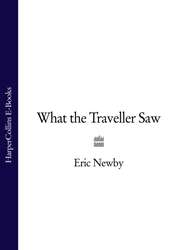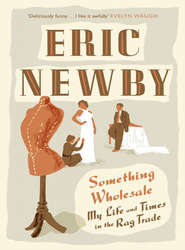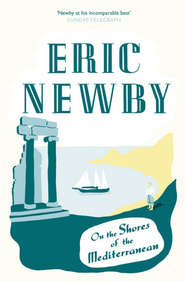По всем вопросам обращайтесь на: info@litportal.ru
(©) 2003-2024.
✖
Round Ireland in Low Gear
Автор
Год написания книги
2018
Настройки чтения
Размер шрифта
Высота строк
Поля
At twelve-thirty the hounds arrived in a big van, very well behaved, and soon more vans and horse boxes trundled up the hill, some drawn by Mercedes. Here, the hunt was more or less on the extreme limits of its territory. It normally hunted over stone walls on the west side of the County, and over banks and fly fences on the east and south. The rough country round us, on the other hand, might give shelter to hordes of hill foxes. Anyway, they were safe today. This was a drag hunt in which the hounds would follow an artificial scent.
By one o’clock those horses still in their boxes were becoming impatient, kicking the sides of them, and catching the air of excitement that was gradually gathering in the street outside. People were beginning to saddle up and mount now, especially the children, of whom there were quite a number. A big van with four horses in it arrived and one of their owners said to the driver, ‘It’s a lovely day! Let’s go and have a jar now in Walsh’s.’ By now the bar was splitting at the seams.
This was not a smart hunt such as the County Galway, otherwise known as the Blazers, the County Limerick, the Kildare, or the Scarteen, otherwise the Black and Tans. It was not the sort of hunt that Empress Elizabeth of Austria, who loved hunting in Ireland more than anything else on earth and was so proud of her figure that she had herself sewn into her habit every hunting day, would have patronized. Most were in black jackets and velvet caps, some were in tweeds, others wore crash helmets, and one man with a craggy, early nineteenth-century face wore a bowler. One man in a tweed coat sounded suspiciously like a Frenchman, there was an elegant American girl in a tweed coat, and what looked like several members of the scrap metal business. A cosmopolitan lot.
The hounds were released; there were eight and a half couple of them, which is a hunter’s way of saying seventeen. After a brief period in which they were allowed to savour delicious smells, one of the Joint Masters, who was wearing a green coat with red facings and black boots with brown tops, took them up the road to cries of what sounded like, ‘Ged in! Ged in!’ and ‘Ollin! Ollin!’ Then they were suddenly turned, and ran back down the street through a press of people and out through the village, down and over the flanks of Derryvoagh Hill and into the eye of the now declining sun. Soon they were lost to view to us and other followers, watching their progress from one of the rocks below the village.
‘By God,’ someone said, ‘the next thing we’ll be hearing of them they’ll be in America.’
I left Wanda to take the long downhill back to Crusheen and the farm, where Tom was very kindly waiting to take her to Ballyvaughan, on the shores of Galway Bay, where we were going to stay for a few days. Then I, too, zoomed downhill bound for the Monastery of Kilmacduagh, which we had failed to see the previous day. I was so exhilarated by the fast cooling air that I almost felt I was flying.
Six miles out as the crow flies from Ballinruan, I zoomed past the site of a ruined castle on the shores of Lough Bunny, then right, past a field in which a small boy was trying to catch a wild-looking horse and bridle it, the Burren blue-black against the setting sun, the plain close under it already in shadow, and on, having missed the road to Kilmacduagh, through the bare, limestone karst from which black and white cattle were somehow scratching a living, spotting an occasional small white farmhouse in what was effectively a limestone desert. Suddenly, there was the monastery, far off to the right across a wide expanse of limestone pavement riven with deep, parallel crevices that looked like an ice floe breaking up: a collection of silver-grey buildings with the last of the sunlight illuminating the conical cap of its enormously tall round tower – 112 feet high and two feet out of the perpendicular. This was the monastery founded in the sixth century by Guaire Aidhneach, King of Connacht (I was now just in Galway and therefore in the old County of Connacht) for his kinsman St Colman Macduagh, on the very spot where the saint’s girdle fell to the ground. The girdle was preserved in the monastery until the seventeenth century.
I pedalled on for another four or five miles through the bare limestone plain, the only visible living things in it now blackbirds and rooks. The last of the sun on this beautiful day was shining on the high, treeless tops of the Burren mountains, so convincingly sculpted by nature into the forms of prehistoric camps and forts that it was difficult to know whether I was looking at the work of nature or of man.
At the intersection of this loneliest of lonely roads with the main road, I nearly ran into the car in which Tom was taking Wanda and her bicycle to Ballyvaughan, together with Gary, the infant prodigy. A signpost still showed thirteen miles to Ballyvaughan and I cycled on, a bit tired, through a landscape by now an improbable shade of purple. I passed a wild-looking girl on a bicycle, and saw two young men in an enclosure full of rocks pushing them to one side with a bulldozer, the only way in the Burren, which is Ireland’s largest rockery, in which you can ever create a field. Until the invention of the bulldozer the inhabitants of the Burren removed all the rocks by hand, either using them for building walls or forming great mounds with them, which are still to be seen. In those days it would have required the help of many people, possibly an entire community, to make a field; now most of those people are either dead or emigrated or both.
The road ran close under the Burren mountains now and along the side of Abbey Hill, which conceals within its folds the beautiful, pale, lichen-encrusted ruins of Corcomroe, a Cistercian abbey built by a king of Munster. High above it, on a saddle, are the three ruined twelfth-century churches of Oughtmama, all that remain of yet another monastery of St Colman Macduagh. To the right, fields of an almost impossible greenness ran down to the shores of Aughinish and Corranroo Bays, long, beautiful, secretive inlets from Galway Bay. Then a delicious descent to a little hamlet called Burren, beside a reedy pond. Then up and down again to Bell Harbour on Poulnaclough Bay; the water in it like steel, with the mountains black above it and above that cobalt clouds against an otherwise pale sky in which Venus was suspended. When it comes to thoroughly unnatural effects it is possible to equal Ireland, difficult to surpass it.
(#litres_trial_promo) By the time I got to Ballyvaughan I had covered forty-five miles and it was dark.
CHAPTER 5 Land of Saints and Hermits (#ulink_b2d1c9e2-6736-5554-a9e3-64e51c894c80)
Stony seaboard, far and foreign,
Stony hills poured over space,
Stony outcrop of the Burren,
Stones in every fertile place,
Little fields with boulders dotted,
Grey-stone shoulders saffron-spotted,
Stone-walled cabins thatched with reeds,
Where a Stone Age people breeds
The last of Europe’s stone age race.
JOHN BETJEMAN. ‘Sunday in Ireland’,
Selected Poems, 1948
The whitewashed cottage we were to stay in (looking at it no one would have guessed that it was built with breeze blocks), at which Wanda had already arrived in Tom’s car, with her bike strapped precariously on top, had a thatched roof and a green front door with a top and bottom part that could be opened separately so that if you opened the bottom and kept the top closed, or vice versa, you looked from the outside as if you had been sawn in half.
The ceiling of the principal living room went right up to the roof and was lined with pine. The floor was of big, olive-coloured grit flagstones from the Cliffs of Moher, and there was an open fireplace with a merry fire burning in it, fuelled by blocks of compressed peat. There was a large table which would have been ideal if I had actually been going to write a book instead of thinking about doing so, which I could do better in bed, and traditional chairs with corded backs and seats. To be authentic they should have been upholstered with plaited straw, but straw had apparently played hell with the guests’ nylons.
The rugs on the floor, all made locally in County Cork, were of plaited cotton which produced a patchwork effect, and there were oil lamps on the walls with metal reflectors behind the glass shades, but wired for electricity. A wooden staircase led to a room above with two beds in it, the equivalent of a mediaeval solar. Leading off the living room was a very well-fitted kitchen, and there were two more bedrooms on the ground floor: altogether, counting a sofa bed and a secret bed that emerged from a cupboard, there were eight, a lot of beds for the two of us. The rooms, primarily intended for the visiting Americans, could be made fantastically hot: they had under-floor heating, convectors, a portable fan heater upstairs, infra-red heating in the bathroom, plus the open fire. Gary was bowled over by all this. He was even more pleased with it than we were. ‘Never,’ he said, ‘in all my born days’ had he seen anything like it.
‘When I get married,’ he confided, ‘I’m going to bring my wife here for our honeymoon.’
‘How old did you say you are?’
‘Eight.’
‘Tell me,’ I said, ‘is there any girl you really like?’
‘There’s one in First Grade. I like her.’
‘How old is she?’
‘About six.’
‘But would you marry her?’
‘I would not.’
‘Why wouldn’t you?’
‘Because she’s an O’Hanrahan. You can’t marry an O’Hanrahan in the parts we come from.’
Later, after he had eaten three apples, a banana and a large plate of salted nuts and drunk three large bottles of Coke, left as a welcoming present by the proprietors (together with a bottle of gin for us), Wanda asked him if he spoke Gaelic.
‘No way!’ he said firmly.
‘But I thought they taught you Gaelic in school.’
‘No, they only teach us Irish,’ he said.
After this we went to a pub where he ate all the nuts on sale there and drank three large orange juices.
Ballyvaughan is a small village and one-time fishing port. Until well into the twentieth century it imported Galway turf for fuel in sailing vessels called hookers – something which makes Americans when they read about them or see a rare survivor go off into peals of laughter – exporting in return grain, bacon and vegetables. Until the First World War and for some time after it there was a regular steamship service to and from Galway in the summer months.
There was not much of Ballyvaughan but what there was we liked: two streets of cottages and shops, one of them running along the shore with a pub restaurant at the western end, open most of the year, which served fish. In the other street there was the post office, Claire’s Place, a restaurant now closed for the winter, a couple of miniature supermarkets and two of the four pubs. Of the pubs, O’Lochlan’s was of the sort that in Ireland was already a rarity: dark in the daytime behind the engraved glass panel in its front door; at night still dark but glittering with light reflected off a hundred bottles and off the glasses and the brass handles of the black wooden drawers stacked one above the other like those in an old-fashioned apothecary’s shop. Behind the bar was a turf-burning stove which kept whoever was serving warm.
The equivalent of Piccadilly Circus in Ballyvaughan was where the roads from Galway and Ennis met; the equivalent of Eros was a monument-cum-fountain equipped with faucets in the shape of lions’ heads erected in 1874 by Colonel the Hon. Charles Wynn, son of the Baron Newborough, who at that time was Lieutenant of Clare. Behind the village the steep, terrace limestone slopes of a mountain called Cappanawalla, which means ‘the stony tillage lands’, rose 1200 feet above it.
Our cottage stood in a meadow in which cows grazed and overlooked one of the two jetties in the harbour which, apart from one fishing boat, was empty. Beyond it was the expanse of Galway Bay and beyond that again, the best part of forty miles away and barely visible, the Twelve Bens of Connemara, at the feet of which, completely invisible, was the Lough of Ballynahinch. This still held the record for having more rainy days in a year than anywhere else in the United Kingdom and Ireland – 309 in 1923 – and was somewhere that I felt we should do our best to avoid.
The next morning was cold, cloudless and brilliant with an east wind, and with what looked like a vaporous wig of mist on the mountains above. While we were eating rashers and eggs we received a visit from an elderly man wearing a long black overcoat and cap to match who offered to sell me a walking stick he had made – one of the last things I really needed, travelling on a bicycle. ‘I’ll bring you a pail of mussels this evening, if you like,’ he said, negotiations having fallen flat on the blackthorn. The whole coast was one vast mussel bed where it wasn’t knee-deep in oysters, but as the tide was going to be in for most of the morning and it was also very cold, it seemed sensible to let him gather them for us.
Our destination that day was Lisdoonvarna: ‘“Ireland’s Premier Spa,”’ I read to Wanda in excerpts from Murray’s Guide (1912) over breakfast. ‘“Known since the middle of the 18th century … situated at a height of about 600 feet above the sea … its climate excellent … the rainfall never rests long upon the limestone surface. The air, heated by contact with the bare sun-scorched rock of the surrounding district, is tempered by the moisture-laden breezes from the Atlantic three or four miles distant, and is singularly bracing and refreshing owing to the elevation.”’ It also spoke of spring water conveyed to the Spa House in glass-lined pipes, thus ensuring its absolute purity. More modern authorities spoke of a rock which discharged both sulphurous and chalybeate (iron) waters, rich in iodine and with radioactive properties, within a few inches of one another, the former to the accompaniment of disgusting smells.
The town was equally famous as a centre of match-making. Farmers in search of a wife were in the habit of coming to stay in the hotels in Lisdoonvarna in September after the harvest; there they found unmarried girls intent on finding themselves a husband. The arrangements were conducted by professional match-makers, in much the same way as sales of cattle and horses are still concluded by professional go-betweens at Irish fairs. This marriage market is still said to thrive, although to a lesser extent than previously. Professional match-makers, masseurs and masseuses, sauna baths, sun lounges, springs, bath and pump houses, cafés, dances and pitch-and-putt competitions, all taking place on a bed of warm limestone – it all sounded a bit like Firbank’s Valmouth. With the addition of a black masseuse it could have been.
‘Did you know,’ I said to Wanda, ‘that according to the Illustrated Ireland Guide “its sulphur water contains more than three times as much hydrogen sulphide gas as the spring at Harrogate”?’ To which she uttered an exclamation, the equivalent to ‘Cor!’ in Slovene, which I knew from a lifetime of experience meant that she wasn’t in the slightest bit interested.











